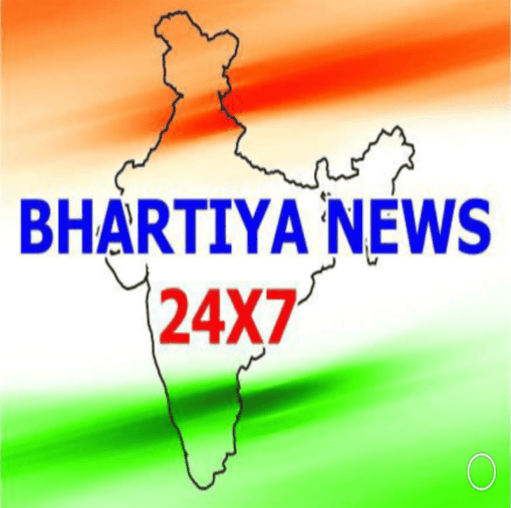

India, poised to surpass 900 million Internet users, would find itself vulnerable without proper policy implementation to combat disinformation. Representational file image.
| Photo Credit: Reuters
The World Economic Forum’s (WEF) Global Risks Report 2025 underscores misinformation and disinformation as the highest ranked short-term global threat. The WEF defines “global risk” as an event that can adversely affect a sizeable portion of the population, the global GDP, and natural resources. The rapid rise of AI-generated content, algorithmic biases, and deep societal divides are making it harder than ever to separate facts from deception.
Information disorder
Also read | From IT bots to AI deepfakes: The evolution of election-related misinformation in India
India, poised to surpass 900 million Internet users, would find itself vulnerable without proper policy implementation to combat disinformation, with its diverse political and social landscape creating fertile ground for manipulated narratives, voter influence, and economic disruption. The crisis isn’t just political; it fuels consumer boycotts, economic conflicts, and international tensions. Adding to the chaos, public trust in legacy media is dwindling, and both political actors and non-state entities are exploiting this gap to push propaganda. With trust in mainstream media declining, citizens are relying more on social media for news. This shift has resulted in a significant number of users forwarding unverified information, often believing it to be accurate simply because it comes from friends or family. With former U.S. President Joe Biden’s warning of an emerging “tech oligarchy”, the world’s largest democracy shouldn’t wait any further to come up with important policy changes such as the European Union’s Digital Services Act to combat Disinformation and Foreign Information Manipulation and Interference (FIMI).
With prominent politicians and national parties’ social media accounts actively sharing deep fakes and unverified information, India is grappling with an escalating information disorder. As a rising global power, India has faced persistent Chinese disinformation threats since the 2017 Doklam standoff, prompting the ban of over 300 Chinese apps, including TikTok, to curb foreign interference. A study by the Indian School of Business and the CyberPeace Foundation reveals that political disinformation accounts for 46%, followed by general issues (33.6%) and religious content (16.8%). Platforms such as Weibo, operating within China, have been actively trying to propagate a distorted image of India. The risks could escalate if Meta ends fact-checking partnerships, as seen in the U.S. The youth dividend of India is facing a growing threat from false information, as a survey report revealed. The Global Risks Report 2025 perceives that people in high-income countries are more concerned about disinformation risks in the coming years than those in lower-income nations with some exceptions. If Indian citizens fail to recognise how disinformation deepens political and societal divides, the consequences could be severe for the democratic and social fabric.
Recommended measures
The Global Risks Report 2025 recommends measures such as upskilling developers working with algorithms, improving public awareness and digital literacy, and ensuring accountability through supervisory boards and AI councils to oversee Generative AI practices. Initiatives like Shakti – India Election Fact-Checking Collective, and the Deepfake Analysis Unit, played a role in tackling disinformation during the 2024 general elections. With almost 400 million Facebook and over 500 million WhatsApp users, India stands as the largest market for social media platforms. By capitalising on this market power, regulatory bodies can push big tech towards positive policy changes to tackle disinformation, such as audits and transparency actions for Very Large Online Platforms with more than 45 million users, similar to the EU’s Digital Services Act. However, caution is needed, as there is a risk that ill-intentions could also escalate surveillance, potentially compromising democratic safeguards, with both censorship and surveillance highlighted as global risks in the WEF report. Platforms should be mandated with regular risk assessment. Adequate funding should be allocated for advancing cybersecurity research and innovation. Transparent content moderation policies must be implemented to address misleading content that threatens public health, safety, or democracy, with strict enforcement of non-discrimination rules. Online ads must disclose funding sources and target audiences to prevent malicious actors from spreading false narratives. Expanding public awareness initiatives, such as the Reserve Bank of India’s Financial Literacy Campaign with Amitabh Bachchan, is essential for fostering critical thinking and societal resilience. Collaboration among civil society groups, fact-checkers, and regulators is crucial to create evidence-based policies for information integrity. A support system for independent research on disinformation and FIMI is necessary, along with stronger laws to protect journalists. With the global nature of disinformation, cross-border coalitions must be established for a coordinated global response.

This challenge goes beyond technology; it is a test of our shared democratic values and threatens our collective ability to uphold truth, unity, and equality. As the world’s largest democracy, India must set an example of diversity and resilience in a growingly polarised global digital world. The real question isn’t just about fighting falsehoods, but also about ensuring that we safeguard our unity in diversity.
Published – April 02, 2025 01:03 am IST
